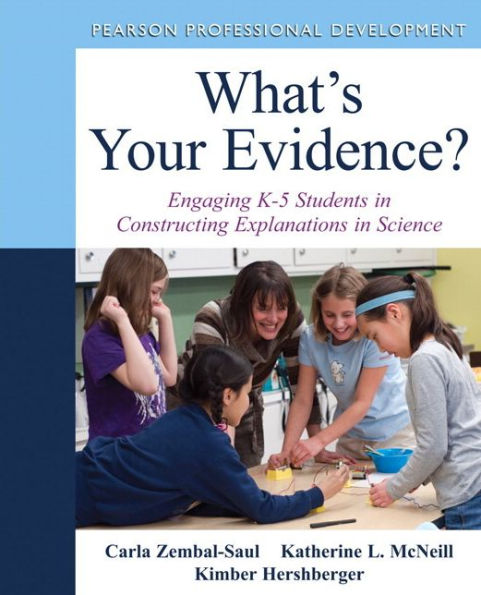With the view that children are capable young scientists, authors encourage science teaching in ways that nurture students’ curiosity about how the natural world works including research-based approaches to support all K-5 children constructing scientific explanations via talk and writing. Grounded in NSF-funded research, this book/DVD provides K-5 teachers with a framework for explanation (Claim, Evidence, Reasoning) that they can use to organize everything from planning to instructional strategies and from scaffolds to assessment. Because the framework addresses not only having students learn scientific explanations but also construct them from evidence and evaluate them, it is considered to build upon the new NRC framework for K-12 science education, the national standards, and reform documents in science education, as well as national standards in literacy around argumentation and persuasion, including the Common Core Standards for English Language Arts (Common Core State Standards Initiative, 2010).The chapters guide teachers step by step through presenting the framework for students, identifying opportunities to incorporate scientific explanation into lessons, providing curricular scaffolds (that fade over time) to support all students including ELLs and students with special needs, developing scientific explanation assessment tasks, and using the information from assessment tasks to inform instruction.
ABOUT THE VIDEO
All of the video clips associated with this text were filmed in elementary grade classrooms in central, rural Pennsylvania. None of the lessons were staged or scripted. The video was not professionally recorded or produced given that our aim was to be as non-intrusive as possible in the classrooms in which we were guests. Permissions were secured for all students and teachers appearing in the video clips. We hope those that view the videos are as grateful as we are that these teachers were willing to share their attempts to integrate scientific explanation into their science teaching practices, providing us with insights that would not be possible without these images. They are the true heroes of this work. - Carla L. Zembal-Saul, Katherine McNeill, and Kimber Hershberger
With the view that children are capable young scientists, authors encourage science teaching in ways that nurture students’ curiosity about how the natural world works including research-based approaches to support all K-5 children constructing scientific explanations via talk and writing. Grounded in NSF-funded research, this book/DVD provides K-5 teachers with a framework for explanation (Claim, Evidence, Reasoning) that they can use to organize everything from planning to instructional strategies and from scaffolds to assessment. Because the framework addresses not only having students learn scientific explanations but also construct them from evidence and evaluate them, it is considered to build upon the new NRC framework for K-12 science education, the national standards, and reform documents in science education, as well as national standards in literacy around argumentation and persuasion, including the Common Core Standards for English Language Arts (Common Core State Standards Initiative, 2010).The chapters guide teachers step by step through presenting the framework for students, identifying opportunities to incorporate scientific explanation into lessons, providing curricular scaffolds (that fade over time) to support all students including ELLs and students with special needs, developing scientific explanation assessment tasks, and using the information from assessment tasks to inform instruction.
ABOUT THE VIDEO
All of the video clips associated with this text were filmed in elementary grade classrooms in central, rural Pennsylvania. None of the lessons were staged or scripted. The video was not professionally recorded or produced given that our aim was to be as non-intrusive as possible in the classrooms in which we were guests. Permissions were secured for all students and teachers appearing in the video clips. We hope those that view the videos are as grateful as we are that these teachers were willing to share their attempts to integrate scientific explanation into their science teaching practices, providing us with insights that would not be possible without these images. They are the true heroes of this work. - Carla L. Zembal-Saul, Katherine McNeill, and Kimber Hershberger

What's Your Evidence?: Engaging K-5 Children in Constructing Explanations in Science
192
What's Your Evidence?: Engaging K-5 Children in Constructing Explanations in Science
192
Product Details
| ISBN-13: | 9780132117265 |
|---|---|
| Publisher: | Pearson Education |
| Publication date: | 02/14/2012 |
| Pages: | 192 |
| Product dimensions: | 7.30(w) x 9.00(h) x 0.50(d) |
